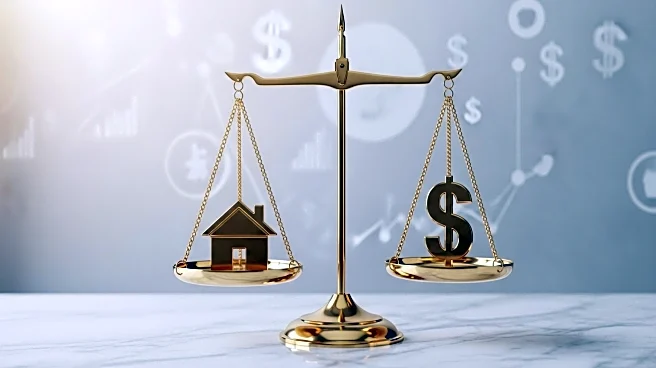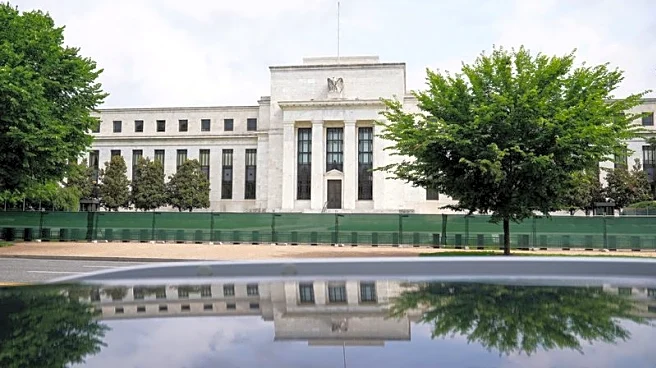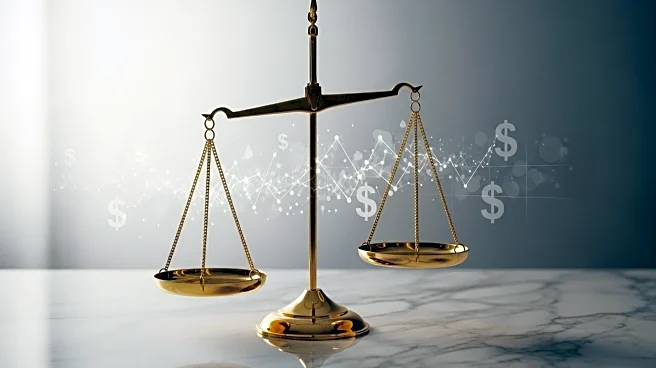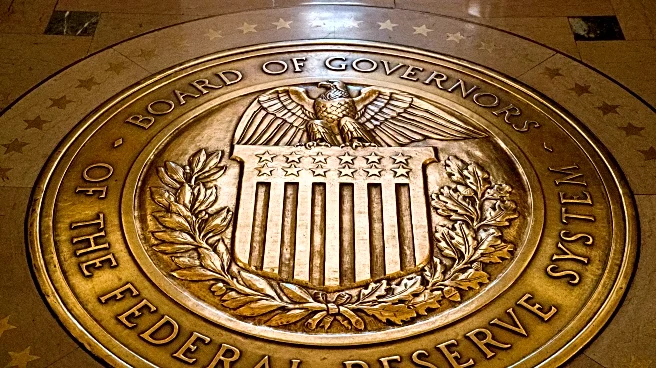What's Happening?
The Federal Reserve has reduced the federal funds rate by 25 basis points, bringing it to a range of 4% to 4.25%. This marks the first rate cut in 2025, aimed at lowering borrowing costs for credit cards, auto loans, and mortgages. The decision comes amid rising inflation, which reached 2.9% in August, surpassing the Fed's target of 2%. The rate cut is also influenced by a weakening labor market, with job growth slowing in recent months. President Trump has been vocal in urging the Fed to lower rates, emphasizing the potential boost to the housing market.
Why It's Important?
The rate cut by the Federal Reserve is significant as it directly affects the cost of borrowing for consumers and businesses. Lower interest rates can lead to cheaper credit card payments, auto loans, and mortgages, potentially stimulating economic activity. However, the decision also reflects concerns about inflation and a slowing labor market, highlighting the Fed's dual mandate of price stability and employment support. The move may benefit borrowers but could impact savers who rely on interest income.
What's Next?
The Federal Reserve's decision may prompt reactions from various stakeholders, including financial institutions adjusting their lending rates. Consumers might see changes in their monthly payments for loans and credit cards. Additionally, the Fed's actions could influence future monetary policy decisions, especially if inflation continues to rise or the labor market weakens further. Political pressure from figures like President Trump may also play a role in shaping the Fed's future actions.












